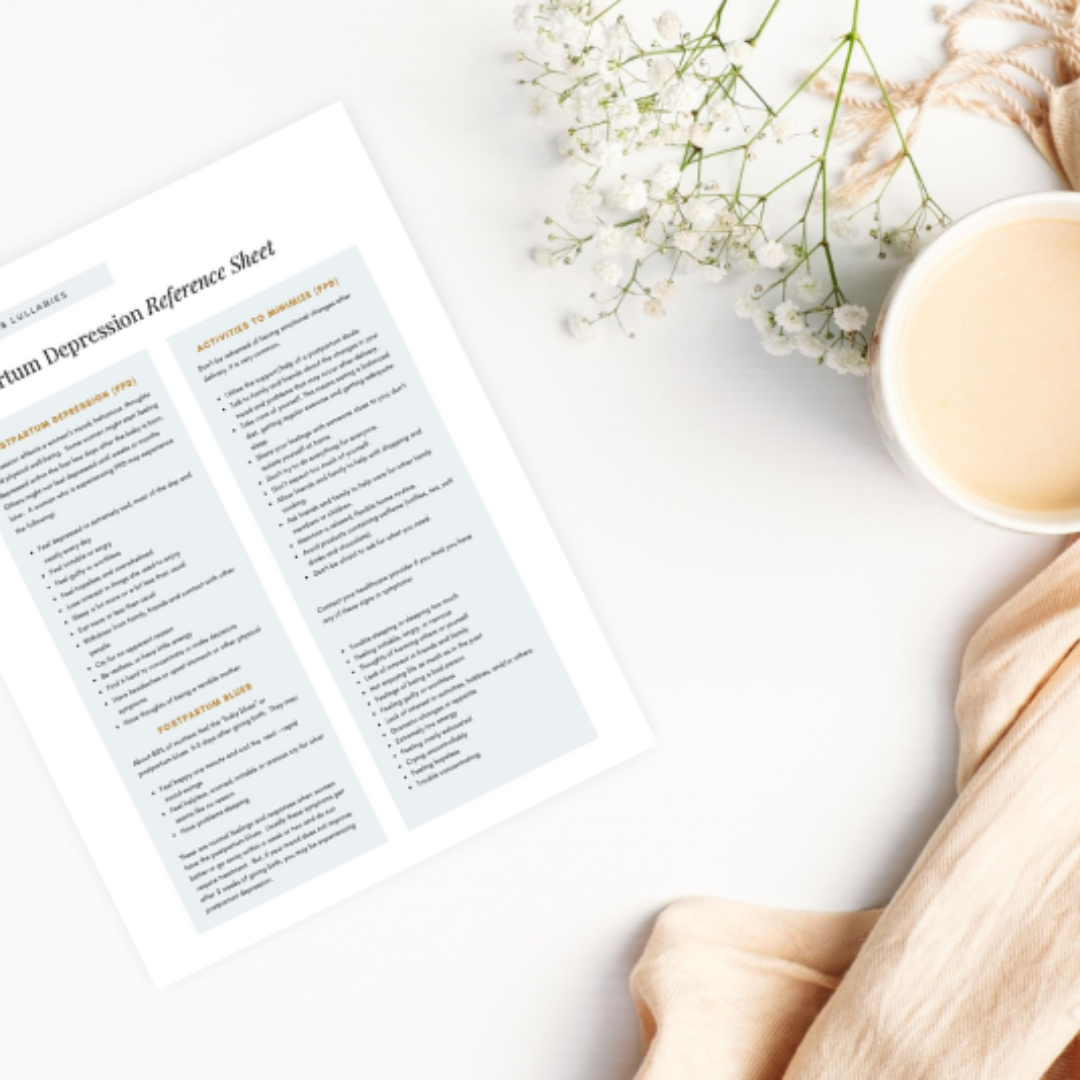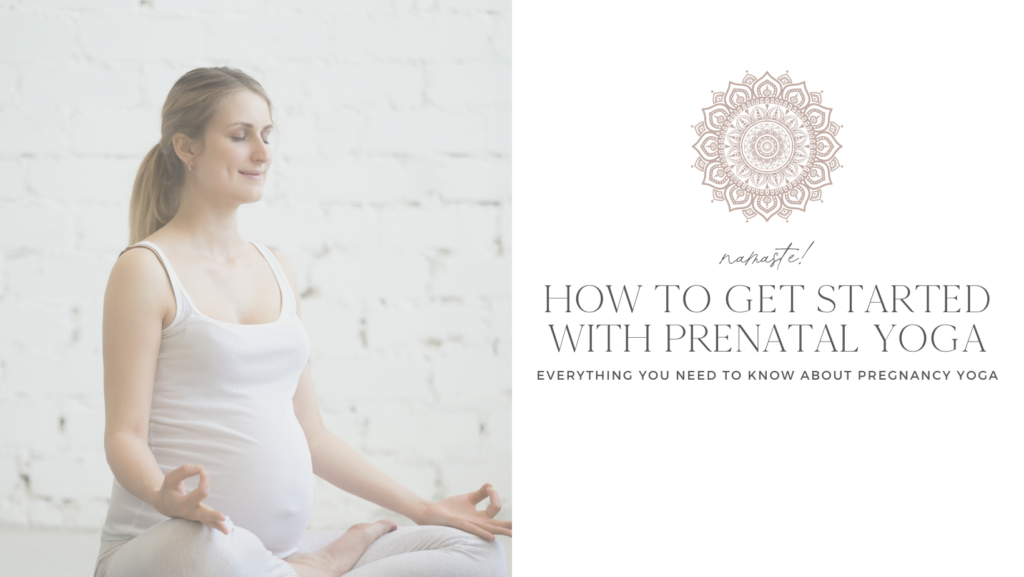
Pregnancy is a time of great change for a woman and her body. Many women turn to prenatal yoga as a way to help them prepare for labor and delivery. Yoga can help improve flexibility, breathing, and relaxation during pregnancy. In this blog post, we will discuss the benefits of pregnancy yoga and how you can get started!
{We are a participant in the Amazon Services LLC Associates Program, an affiliate advertising program designed to provide a means for us to earn fees by linking to Amazon.com and affiliated sites. To learn more about affiliate links, click here!}
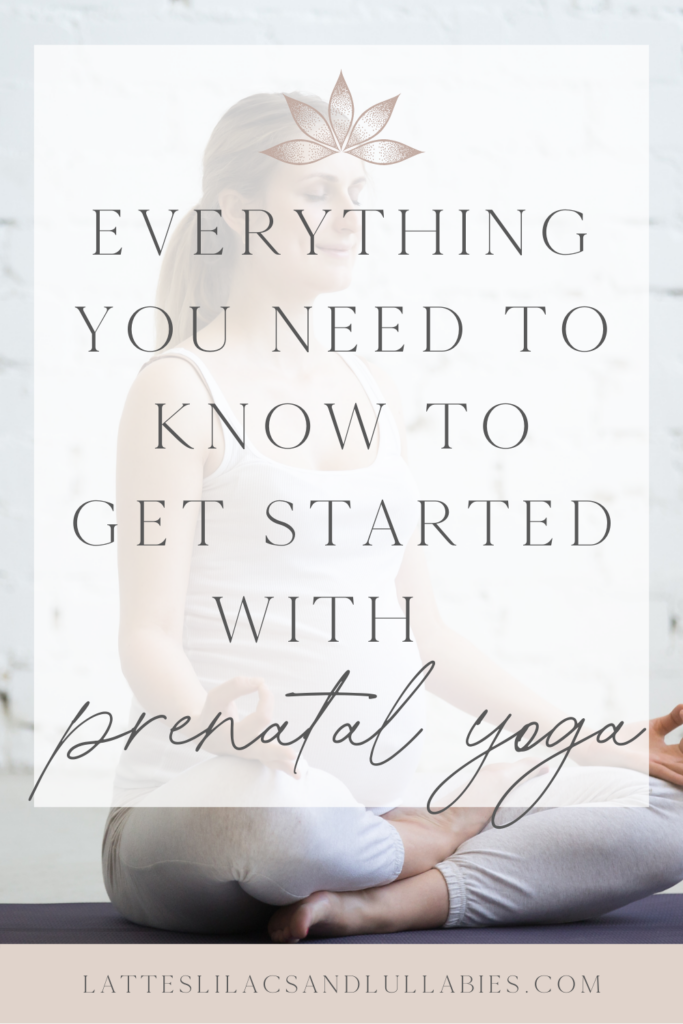
Prenatal yoga can help to ease many common discomforts of pregnancy such as back pain, nausea, and fatigue. It can also help to improve sleep and reduce stress levels. Yoga poses and breathing exercises can help you to prepare for the physical demands of labor and delivery.
What is Prenatal Yoga
Prenatal yoga is a type of yoga designed specifically for pregnant women. It can help to improve flexibility, strength, and stamina, as well as provide a sense of calm and relaxation. Prenatal yoga classes typically focus on gentle stretching and breath work, with some poses being modified to accommodate the changing body.
While practicing yoga can be beneficial for pregnant women, it is important to consult with a professional before beginning any new exercise regime. Prenatal yoga classes are usually offered through community centers, fitness clubs, or specialized studios. Many hospitals also offer classes as part of their birthing services.
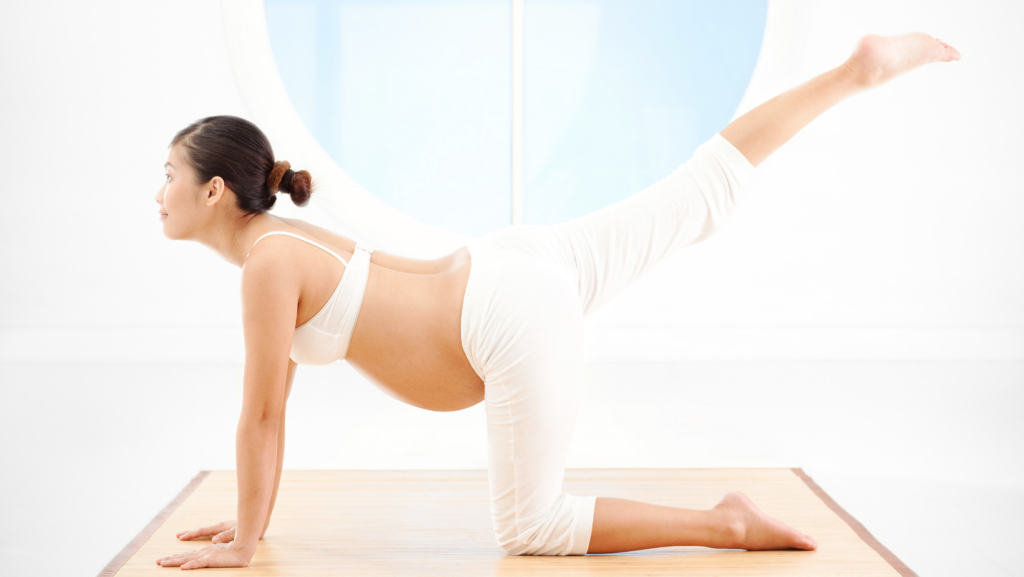
Benefits of Prenatal Yoga
For expectant mothers, the practice of yoga can offer a variety of benefits. First and foremost, yoga can help to focus the mind and body on the breath. This is important for both mother and baby, as it can help to regulate blood pressure and promote relaxation.
Additionally, yoga can help to strengthen the abdominal muscles and the pelvic floor. This can be beneficial during pregnancy, childbirth, and the postpartum period. Finally, yoga can help to increase energy levels and improve circulation. For all these reasons, prenatal yoga is an excellent way to prepare for motherhood.
More Benefits of Pregnancy Yoga:
-improve sleep quality
-alleviate some of the common discomforts of pregnancy, such as nausea, back pain, and swelling.
-promote bonding between mother and child
-prepare the body for labor and delivery
-provide a much-needed sense of community for pregnant women who may be feeling isolated or overwhelmed.
In short, prenatal yoga classes offer a full range of benefits for both body and mind. So whether you’re looking to improve your sleep quality or relieve pregnancy-related discomforts, prenatal yoga classes are definitely worth considering.

Where To Practice Prenatal Yoga
Pregnancy yoga class can be extremely helpful during pregnancy. Not only does it provide a chance to connect with other expectant mothers, but it can also help to ease pregnancy-related aches and pains. However, pregnancy yoga classes can be hard to find. Many yoga studios do not offer them, and the ones that do often have waiting lists.
So, where can you go to practice prenatal yoga?
One option is to take a regular yoga class and simply modify the poses as needed. This is perfectly safe as long as you listen to your body and do not push yourself too hard. Most yoga teachers are also familiar with pregnancy modifications and can offer guidance when needed.
Another option is to attend a restorative yoga class. These classes focus on gentle stretching and deep breathing, both of which can be helpful during pregnancy.
Finally, there are many online resources that offer pregnancy-specific yoga practices. Whether you attend a class or practice on your own, prenatal yoga can be an excellent way to care for yourself during pregnancy.

Staying Safe In Yoga Class
Yoga class can be a great way to stay fit during pregnancy, but there are a few things to avoid. Hot yoga is a no-go, as the increased temperature can be dangerous for both you and your baby. Additionally, you’ll want to make a few modifications to common poses.
For example, avoid inversions and any position that puts pressure on your abdomen. Instead, focus on gentle stretches that open up the hips and chest. And always listen to your body – if something doesn’t feel right, don’t do it! By following these simple guidelines, you can safely enjoy yoga class throughout your pregnancy.
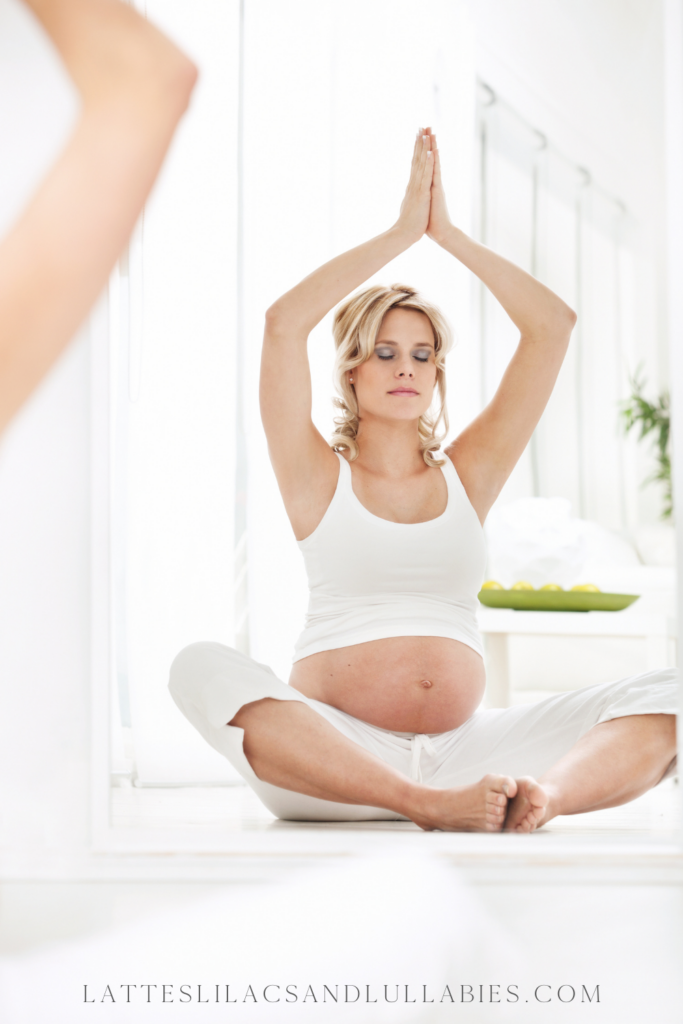
What To Expect In Prenatal Yoga Class
If you’re new to yoga, the prospect of attending a prenatal yoga class can be daunting. After all, you’re already dealing with pregnancy-related aches and pains, and the thought of contorting your body into strange positions doesn’t exactly sound appealing. However, there’s no need to worry – prenatal yoga classes are designed to be gentle and comfortable for expectant mothers.
The focus is on breathing and relaxation, and the poses are carefully chosen to minimize the risk of injury. In addition, the class will provide you with an opportunity to meet other expectant mothers and share your experiences. So don’t be intimidated – prenatal yoga is a great way to stay healthy and connected during pregnancy.

FAQs About Pregnancy Yoga
Q: I’m not sure if I’m ready for a regular yoga class. Is there another option?
A: If you’re not ready for a regular yoga class, you can try a restorative yoga class. These classes focus on gentle stretching and deep breathing, both of which can be helpful during pregnancy.
Q: Can I practice yoga at home?
A: Yes, you can practice yoga at home. There are many online resources that offer pregnancy-specific yoga practices. Whether you attend a class or practice on your own, prenatal yoga can be an excellent way to care for yourself during pregnancy.
Q: What should I avoid in yoga class?
A: You should avoid hot yoga and any position that puts pressure on your abdomen. Instead, focus on gentle stretches that open up the hips and chest. And always listen to your body – if something doesn’t feel right, don’t do it! By following these simple guidelines, you can safely enjoy yoga class throughout your pregnancy.
Q- What do I need to practice yoga safely?
A- A yoga mat, comfortable clothing, and water. If you are attending a class, the studio will usually provide props such as blankets and blocks. Otherwise, you can purchase these items at a sporting goods store or online.
Additionally, it’s a good idea to have a towel handy to wipe away sweat. Finally, make sure to listen to your body and stop if you feel pain or discomfort. By following these simple guidelines, you can safely enjoy yoga during pregnancy.
Q- When should you start prenatal yoga?
Prenatal yoga is a great way to stay active during pregnancy and prepare for childbirth. But when is the best time to start?
While there is no one-size-fits-all answer, most experts recommend starting around the second trimester. This is when the baby starts to grow and the pregnancy starts to show. Starting prenatal yoga at this stage can help you to stay fit and toned as your body changes. It can also help you to connect with other expectant mothers and share tips and advice.
However, if you’re not sure when to start, it’s always best to check with your healthcare provider first. They can let you know if there are any specific considerations that you need to take into account. So, don’t wait too long to get started on your prenatal yoga journey!
Q- How many times a week should I do prenatal yoga?
Prenatal yoga is a great way to stay active during pregnancy. But how often should you do it? The answer, of course, depends on your individual fitness level and pregnancy. If you’re new to yoga, start with once or twice a week.
As your pregnancy progresses, you may want to increase the frequency of your yoga practice. Just be sure to listen to your body and take things at your own pace. And remember, there’s no need to push yourself – this is yoga, not a competition!
Prenatal yoga is all about relaxing and connecting with your baby. So go ahead and enjoy the benefits of yoga – your baby will thank you for it.
Q- When should I switch from yoga to prenatal yoga?
When it comes to yoga, there are many different types to choose from. If you want to relax, there’s restorative yoga. If you’re looking to break a sweat, there’s power yoga. And if you’re pregnant, there’s prenatal yoga. But when is the right time to make the switch from regular yoga to prenatal yoga?
According to experts, the answer isn’t always clear-cut. Some women continue with regular yoga classes until their baby bump gets too big or they start to feel uncomfortable. Others make the switch as soon as they find out they’re pregnant.
Ultimately, it’s up to each woman to listen to her body and do what feels best. So, if you’re pregnant and wondering whether or not you should switch to prenatal yoga, the answer is simple: do what feels right for you.
Q- Can I do yoga during first trimester?
The first trimester of pregnancy can be an exciting and daunting time. There are so many things to think about and prepare for, and it can be hard to know what’s best for you and your baby. When it comes to exercise, there are a lot of different opinions out there.
So, can you do yoga during the first trimester? The short answer is yes! Yoga can be a great way to stay active during pregnancy. It helps to strengthen the muscles and improve flexibility, both of which can be helpful as your body changes. However, it’s important to listen to your body and modify poses as needed.
If you’re new to yoga, it’s a good idea to take a class with a qualified instructor who can give you modifications for each pose. And, of course, be sure to let your instructor know that you’re pregnant. With a little bit of care and precaution, yoga can be a great way to stay healthy during pregnancy!
Q- How far into pregnancy can you do yoga?
As any mom-to-be knows, pregnancy can be a time of great change, both physically and emotionally. And while yoga can be an excellent way to manage stress and promote relaxation, it’s important to be aware of the potential risks.
For example, some poses can put unnecessary strain on the lower back and abdominal muscles. Moreover, as the pregnancy progresses, the center of gravity shifts, making it more difficult to maintain balance. That’s why it’s generally recommended that pregnant women avoid yoga in the later stages of pregnancy.
However, with the approval of a healthcare provider, many women find that they can safely continue practicing yoga right up until the day they give birth. So if you’re looking to stay zen during your pregnancy, be sure to ask your doctor about yoga first.
Q- Is it safe to start yoga when pregnant?
When it comes to expecting mothers, the internet can be a minefield of conflicting information. Should you eat for two or go on a diet? Is it safe to drink coffee or should you give it up entirely? And what about exercise? Some sources recommend avoiding it altogether, while others suggest specific exercises that can help to ease pregnancy-related aches and pains. So, what about yoga? Is it safe to start practicing when you’re expecting?
The short answer is yes, but as with anything during pregnancy, it’s important to listen to your body and take things at a comfortable pace. Prenatal yoga classes are a great way to connect with other expectant mothers and learn poses that are safe for pregnancy. However, if you’re new to yoga, it’s also perfectly fine to start practicing at home with a few beginner-friendly poses. No matter how you choose to start your practice, remember to listen to your body and take things at your own pace. After all, there’s no rush – you’ve got nine months!
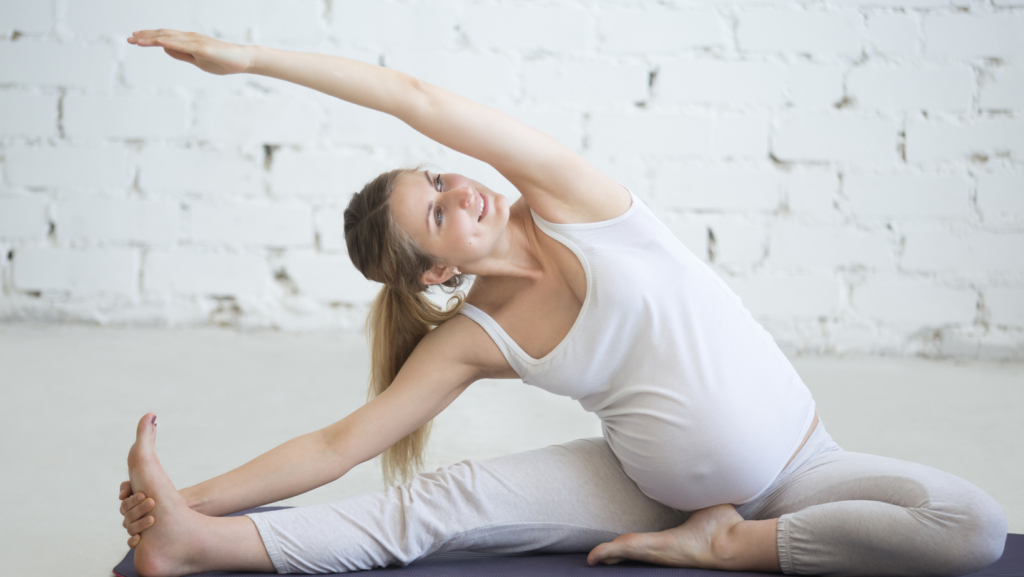
Q- Can yoga cause a miscarriage?
Pregnant women have been doing yoga for centuries, and there’s no evidence that it increases the risk of miscarriage. In fact, some studies suggest that yoga may actually help to reduce the risk of miscarrying. So if you’re pregnant and thinking about starting yoga, don’t worry—just be sure to listen to your body and avoid any poses that might be too strenuous. And of course, always consult with your doctor before starting any new exercise plan.
Q- Can yoga help with morning sickness?
Expecting mothers have a lot to deal with, from swollen ankles to an expanding waistline. But of all the challenges that come with pregnancy, morning sickness may be the most difficult to overcome. Thankfully, there may be relief in the form of yoga.
Studies have shown that regular yoga practice can help to reduce the symptoms of morning sickness, including nausea and vomiting. Additionally, yoga can help to improve energy levels and promote better sleep. For expectant mothers who are struggling with morning sickness, yoga may be worth a try. After all, it’s just one more way to help ensure a healthy and happy pregnancy.
Q- Does yoga help childbirth?
So, does yoga help with childbirth? The answer may surprise you. While there is no scientific evidence that yoga helps to ease the pain of childbirth, there are some potential benefits. For one, yoga can help to improve your flexibility, which can make it easier to deliver your baby.
Additionally, yoga can help to improve your breathing and relax your body, both of which can be helpful during labor. Finally, yoga can provide an opportunity for you to connect with other mothers-to-be and share your experiences. So, while there is no guarantee that yoga will make childbirth any easier, it certainly can’t hurt. And who knows – you might just find that it helps in more ways than you ever thought possible.
Q- What are the best yoga poses for pregnancy?
There are a number of different yoga poses that can be beneficial for pregnancy. For example, the cat-cow pose can help to stretch the back and ease pregnancy-related back pain. The Cobra pose can also help to ease back pain and improve flexibility.
Other beneficial poses include the Camel pose, which can help to open the hips, and the Child’s pose, which can help to alleviate stress and fatigue.
Remember, however, that it’s important to listen to your body and only do poses that feel comfortable. If a pose doesn’t feel right, don’t force it – there are plenty of other options to choose from.

Pregnancy Yoga Tips
Now that you know a little bit more about pregnancy yoga, here are some tips to help you get the most out of your practice:
-Start with a beginner’s class:
If you’re new to yoga, it’s important to start with a beginner’s class. This will allow you to get a feel for the basic poses and determine what level of difficulty is right for you.
-Choose a class that’s specifically designed for pregnant women:
Not all yoga classes are created equal. When choosing a class, make sure that it’s specifically designed for pregnant women. This will ensure that the poses are safe for you and your baby.
-Listen to your body:
Yoga is all about listening to your body and doing what feels good. If something doesn’t feel right, don’t do it! Pregnancy is not the time to push yourself beyond your limits.
Pregnancy Yoga: Conclusion
All in all, yoga is a great activity for pregnant women. It has many potential benefits and is generally considered to be safe. However, as with anything during pregnancy, it’s important to listen to your body and take things at a comfortable pace.
If you’re pregnant and thinking about starting yoga, don’t worry—just be sure to listen to your body and avoid any poses that might be too strenuous. And of course, always consult with your doctor before starting any new exercise plan. Namaste.
More Posts You’ll Love…
Stephanie Wilson




